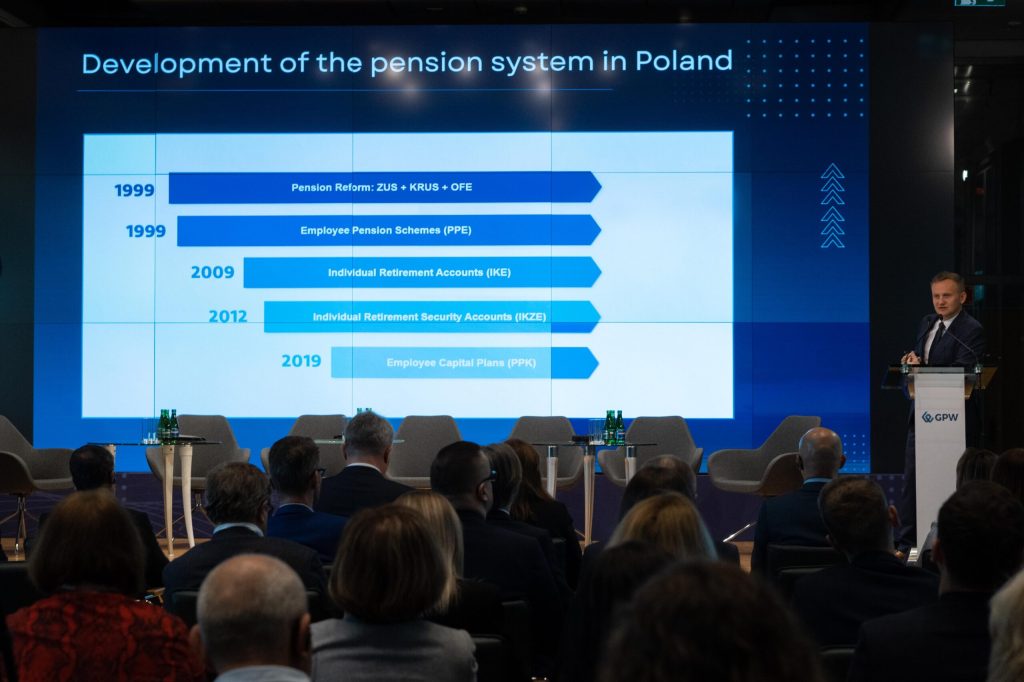In an age where technology shapes almost every aspect of our lives, from fitness to socializing, it’s high time we embrace it for retirement planning as well. While many of us have successfully harnessed apps like Strava to track our running or cycling activities, why not apply a similar concept to retirement savings? In this article, we will explore the potential benefits of having a Strava-inspired app for retirement planning, one that motivates us to save more for our secure future.

I love to cycle, it’s one of my favorite activities that enables me to clear my head after a busy week at the office and is also great exercise, but in the last few years I’ve struggled to find enough time for it. Having a family with small children, a dog, and everything else that goes with it, I found it tough to carve out a few hours in the week for cycling.
Having seen a few close friends using the popular fitness app Strava for quite some time and sharing their activities on social media, I decided to also give it a try. The app enables you to track your activities like running and cycling using GPS and then sharing them with your followers or even sharing them publicly. The app makes in their own words “fitness tracking social” and I`ve found this feature very motivating. Seeing my friends cycle almost every other day also inspired me to pick up my bike and do some miles on it and share my ride to “compete” with them. Seeing the rides other people are doing also gave me some ideas on where to go and also inspired me to try some new routes and then share them back with my friends. Using it for the last three months I have noticed many smart features that are harnessing various behavioral concepts that could be adapted also to help individuals save more effectively for retirement. Let’s check them out.
GPS Tracking for Financial Progress:
Just as Strava tracks your running and cycling routes, a retirement planning app could track your financial journey. By visually displaying your progress towards your retirement goals, you’ll have a clearer picture of where you stand and where you need to go. There is huge potential to make also various online accounts of collective pension plans look more visually attractive and use nice graphics to show people their saving progress and incorporate various projections of their future retirement pot.
Social Networking for Accountability:
Sharing financial goals and achievements on social media platforms can encourage a sense of accountability. Much like Strava allows users to follow friends and see their activities, a retirement planning app could enable you to connect with peers who share similar retirement goals. Seeing your friends’ savings milestones can motivate you to step up your game. This feature could be tricky, as I`m aware most people would hesitate to share how much they’ve saved up in their 401(k) retirement account and that sharing details about your pension pot is not the same as sharing how many miles you’ve cycled this year, but the concept is worth exploring. Even sharing that you are saving for retirement with a certain app without revealing the amounts would signal that you are actively doing something and would maybe make your friends think, what am I doing regarding my retirement. So this feature is for sure worth exploring more, as there is nothing that motivates people more than some “healthy” competition.
Challenges for Savings Goals:
Strava’s challenges, such as the 200km monthly cycling challenge or the “Gran Fondo” which requires you to do a 100km ride in one activity, could be adapted to inspire savings. Users could join financial challenges, like saving a certain percentage of their income each month or hitting specific savings targets, like the €1.000 monthly. These challenges would not only motivate you but also provide a sense of accomplishment upon completion.
In the screenshot below the app suggests that I join the September Cycling Challenge to ride 200 kilometers in one month and it also cleverly points out that more than 824.000 athletes have already joined the August challenge nicely using the social proof concept.

Progress Sharing for Encouragement:
Just as you might post a screenshot of your cycling route, a retirement planning app could allow users to share their financial progress. Sharing your retirement account’s growth or successful investment decisions could inspire others to follow suit and foster a community of savers. Again, sharing a cycling route and your pension pot is not the same, but could work given proper adjustments. Let’s say I would share “Žiga’s pension portfolio achieved a 7,3% yield in 2023.” or “Žiga surpassed his 10% of income saving target this month” or in a case of collective pension plans you could share to a certain user “You are in the 10% of savers in your company pension plan, good work!”.
Rewards and Incentives:
Strava rewards users with badges and accolades for their achievements. Similarly, a retirement planning app could offer badges or even financial incentives for meeting savings milestones. This gamification could make saving for retirement more engaging and fun. You could earn badges for being among top savers in a certain time period or within a certain company pension plan.
Below you can see a screenshot from my Strava app with all kinds of badges for being the fastest on certain segments of the ride and also for the longest ride of the season (I`ve only started using it at that time 😉 and one of my friends already “liked” my ride and I can easily share it on social media. All of this is making me feel really good about myself.

Data-Driven Insights:
Strava provides users with data-driven insights on their physical activities. A retirement planning app could offer similar insights into your financial habits, helping you identify areas where you can improve your savings strategy, like changing the investments or contributing more.
The success of Strava in motivating individuals to stay active and connect with others in pursuit of their fitness goals is a testament to the power of technology in shaping behaviour. By adapting Strava’s features to retirement planning, we in the retirement industry have to learn and adapt best practices from other fields and create saving accounts and apps that not only help people save more effectively, but also foster a sense of community around financial wellness, help set goals and give positive encouragement along the way. All to help us stay motivated to secure a comfortable retirement. So, as you gear up for your next cycling or running challenge, envision a future where a retirement planning app inspires you to save for a brighter financial future. This is what we have to strive for.
PS: I`m aware there are quite a few smart financial apps already out there harnessing various behavioral science concepts to help people save for their future or other financial goals, like Acorns or Qapital, most are unfortunately not available in Slovenia or EU, so my first hand experience with them is limited. The main point of my article is to show how smart apps can be really effective in certain fields to change people’s behavior. We have to be open to test concepts from other fields and apply them to the retirement planning arena and see where they can take us. The potential is huge.
Further reading:
Strava app, Wikipedia. Retrieved from: https://en.wikipedia.org/wiki/Strava
Cassidy Horton (2023). Best Money-Saving Apps Of October 2023 (2023). Forbes Advisor. Retrieved from: https://www.forbes.com/advisor/banking/savings/the-5-best-round-up-apps-for-saving-money/#:~:text=Some%20popular%20savings%20apps%20include,one%20that%20fits%20your%20needs.




























